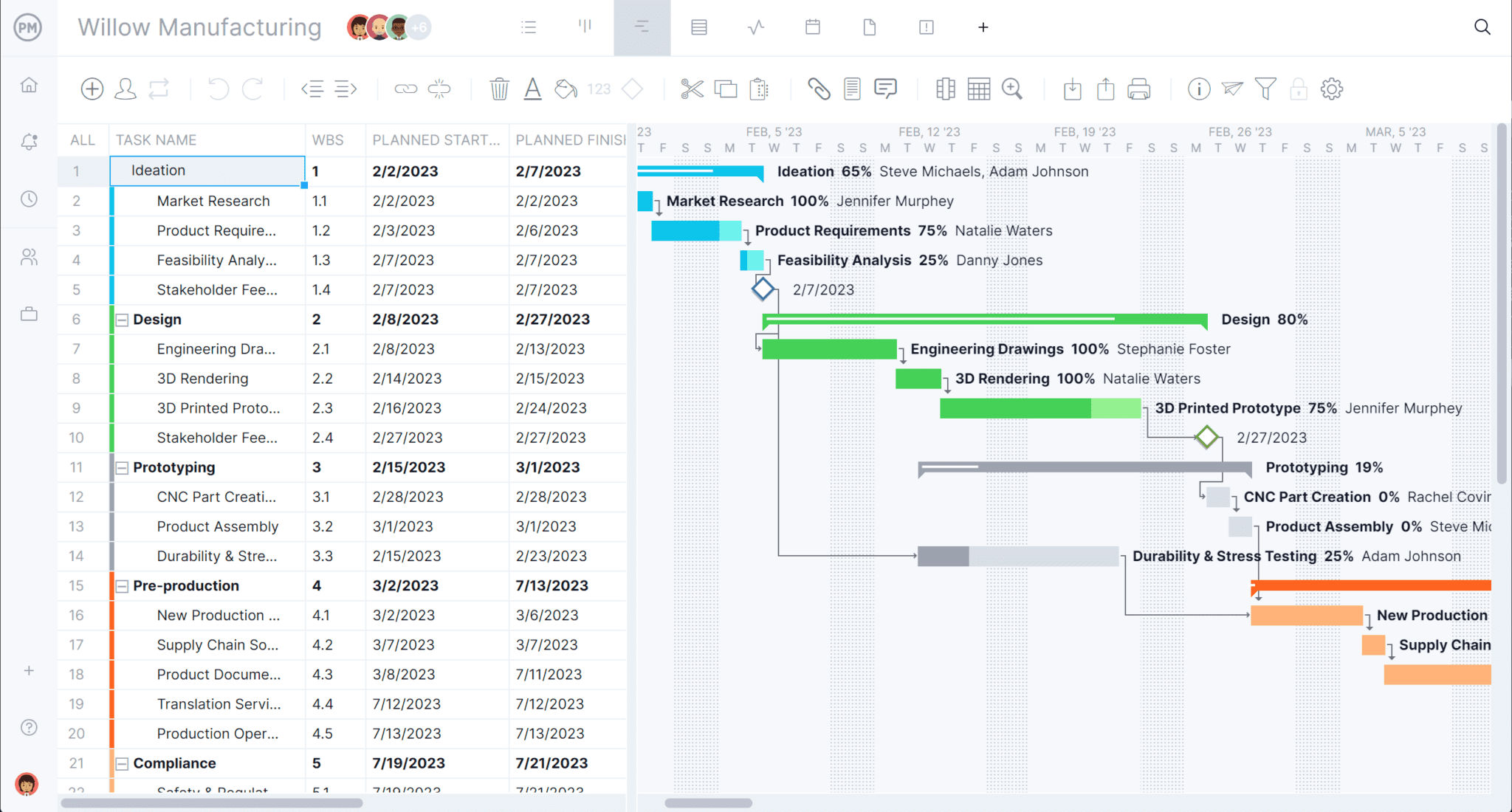Kanban in manufacturing originated in World War II where it was used in the manufacturing of Spitfires for the Royal Air Force in the UK. Then it was known as the two-bin system. After the war, the Japanese car manufacturer Toyota looked at how supermarkets stocked only what they expected to sell at a given time. This led to improvements in manufacturing efficiency.
Kanban in manufacturing and production has many uses, which we detail below, as well as how it relates to lean and just-in-time (JIT) manufacturing. To further illustrate kanban in manufacturing, we’ll show a visual example of it at work and outline the key advantages of using this scheduling system as well as how project management software can advance its benefits.
What Is Kanban?
Kanban is a visual method for managing workflow and production. It’s a Japanese word that means billboard as it looks like a board with cards attached. It’s a flexible scheduling system that can be applied to manufacturing, agile, DevOps and virtually any repeatable process. Kanban can also be used as an inventory control system used in just-in-time (JIT) manufacturing, which limits the buildup of excess inventory. Done properly, kanban can reduce expenses, improve customer satisfaction, create more efficient processes and limit risk.
At its most basic level, it’s a board that’s divided into columns of to do, doing and done. On this board are cards that represent specific tasks. The kanban cards move across the kanban board as they go from one production stage to the next. This provides a visual representation of where the work is and helps managers identify potential roadblocks and remove them before they hinder progress.
Kanban boards can be actual boards with paper kanban cards pinned to them and physically moved from column to column as work is completed. They can be displayed in the workplace to provide everyone with a visual representation of where they are in the manufacturing process, which serves both those doing the work as well as sales informing customers on delivery dates and procurement, ensuring there’s always enough inventory to keep producing.
Digitalizing kanban boards has only increased their ability to limit the buildup of excess inventory throughout production. Many project management software products have kanban features. ProjectManager is award-winning project and portfolio management software with robust kanban boards that can manage tasks and workflows more efficiently. Images and documents can be attached to kanban cards, which can also have descriptions, subtasks, tags, priority, planned start, duration, due dates and more. Visual workflows make it easy to identify bottlenecks and custom workflows can be made with automation features to streamline manual, repetitive work. Get started with ProjectManager today for free.
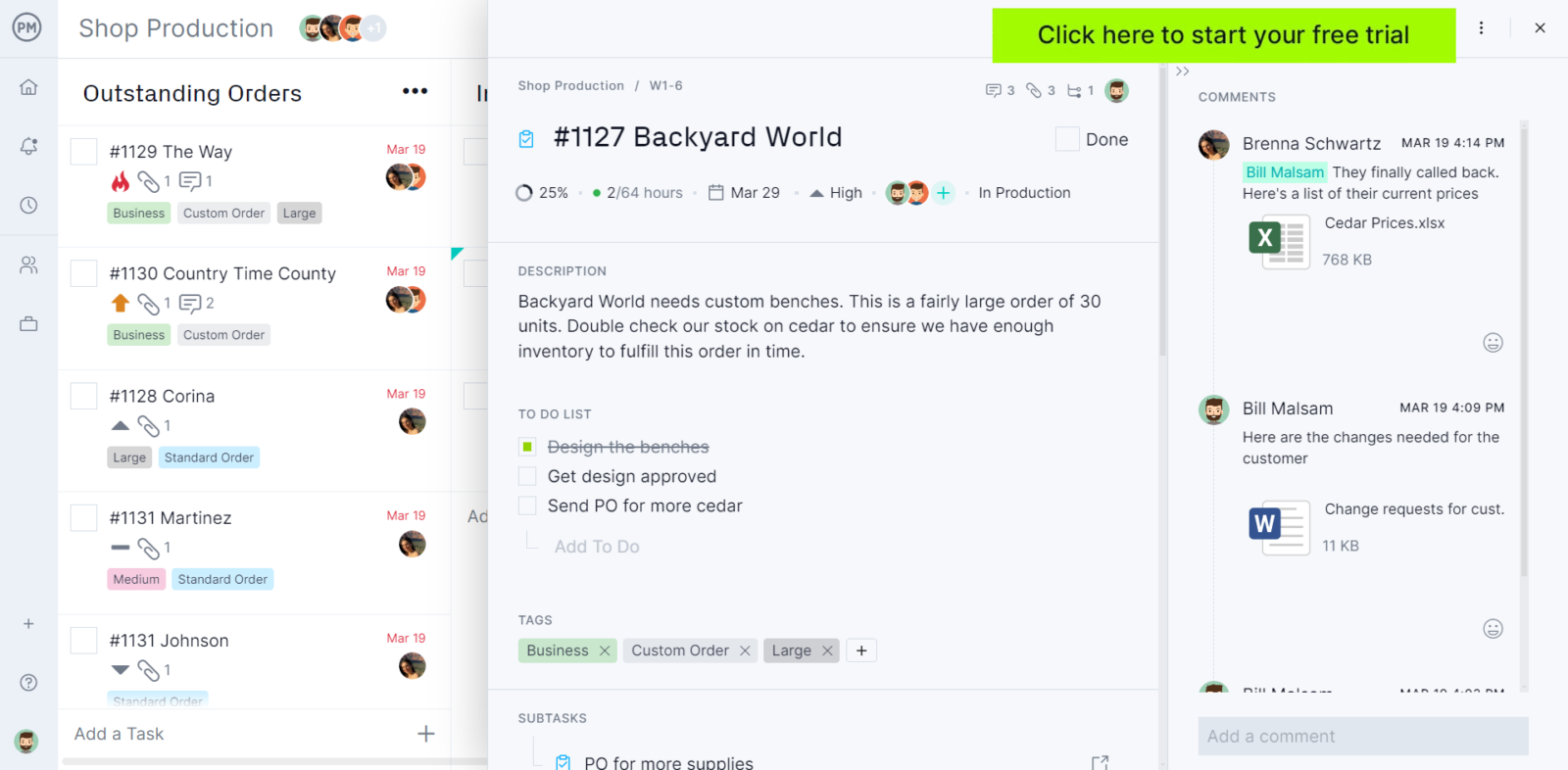
Key Uses of Kanban in Manufacturing and Production
The kanban board gained popularity in manufacturing and production due to its ability to help reduce waste and increase production process efficiency. Therefore, kanban in manufacturing can be applied to various aspects of the work. We listed some key uses of kanban in manufacturing and production below.
Kanban Inventory Management
Using kanban in manufacturing can help maintain the optimal production inventory levels. It does this by signaling when inventory needs to be produced or ordered. By doing this, inventory levels are never too high or too low. This has multiple benefits, such as saving money, improving cash flow and reducing waste with kanban in manufacturing. This helps reduce overstocking items, which add to warehouse costs, or understocking, which can disrupt production. Our free inventory template for Excel can help you manage your production inventory.
Order Management
Kanban gives a visual overview of the ordering and procurement process. It shows who’s working on what and its latest status. Just as with inventory, when an item is running low, the person using the parts can make up the order for the amount needed, which is sent to the supplier who provides the requested amount.
Task Management
Kanban systems are a visual workflow management tool and in that capacity, they give project managers visibility into the team’s work, which allows them to track their team’s progress in completing that work. It also limits work-in-progress, which permits teams to focus on only critical tasks and maximize efficiency or flow. This allows project teams to execute their tasks faster.
Workflow Management
Kanban workflows are a step-by-step process of the life cycle of a task, from start to finish. This is illustrated with the simple kanban workflow of three columns on the boards: to do, doing and done. The kanban cards, which represent the tasks, then move sequentially from the first state to the last. Kanban in manufacturing can use workflow as a visual process management system for continuous delivery and production planning.
Supply Chain Management
Kanban systems can also be used to create supply chain visibility for both suppliers and buyers. As noted, it limits the buildup of excess inventory throughout the production line. It also limits the number of items waiting at supply points and reduces inefficiencies by identifying and removing them.
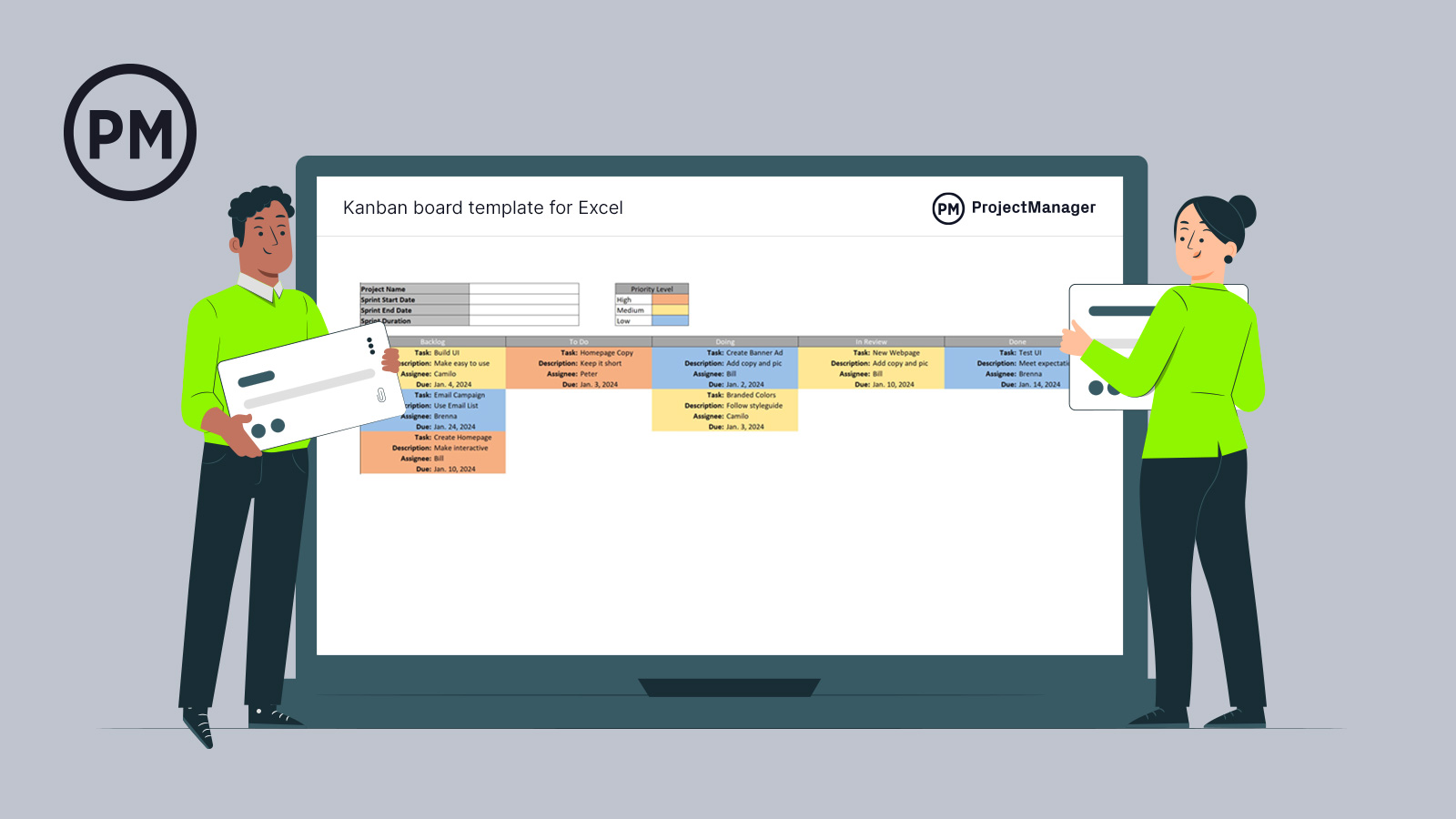
Get your free
Kanban Board Template
Use this free Kanban Board Template for Excel to manage your projects better.
Kanban & Lean Manufacturing
As we’ve learned, kanban is about visualizing workflow, limiting the work-in-progress, managing workflows to reduce bottlenecks, defining and sharing work, using feedback loops to improve processes and working collaboratively.
Lean manufacturing is a methodology that focuses on minimizing waste and maximizing productivity. Waste is defined as anything the customer doesn’t think adds value and, therefore, is unwilling to pay for.
Kanban and lean manufacturing share goals and values, but there are key differences between the two. Kanban is a more flexible approach and less prescription than lean. It doesn’t prescribe any specific roles, ceremonies or artifacts. Kanban is more focused on flow, while lean is concerned with value.
That’s why kanban is better used in complex and unpredictable situations, while lean is more suited for simple and stable work. Kanban can handle changing priorities and dependencies, but lean needs a clear and stable value stream.
Kanban & Just-In-Time Manufacturing (JIT)
Kanban is used in just-in-time manufacturing. It’s used to control the work-in-progress production and inventory movement. It also helps to eliminate manufacturing waste due to overproduction.
Just-in-time manufacturing is a form of inventory management where manufacturers work closely with suppliers so that raw materials arrive as production is scheduled to begin, not sooner. This keeps a minimum of inventory on hand to meet demand.
Kanban is often used as a scheduling system with JIT to avoid over-capacity of work-in-progress. But they’re not the same thing. Just-in-time is about timing and reducing inventory to only what’s necessary, while the kanban method helps manage the flow of materials and tasks for efficient production processes.
Manufacturing Kanban Board Example
To better understand kanban in manufacturing, let’s look at an example. This is a simple example, with the kanban board divided into four columns: to do, doing, ready for inspection and done. The first column deals with stakeholder feedback, pre-production and supply chain sourcing, among other things.
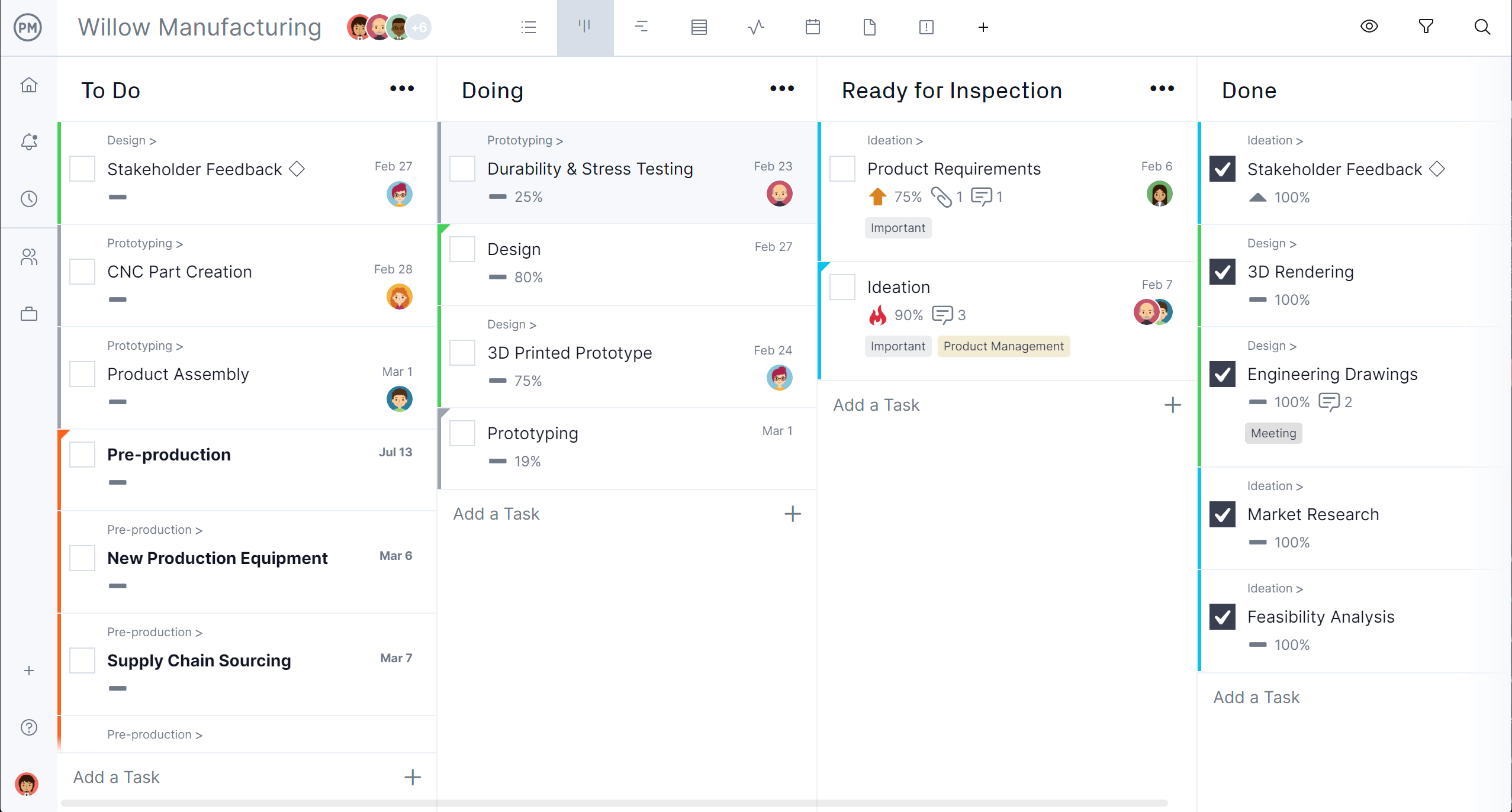
The next column is for work that’s in progress. Here, that’s design work, prototyping and testing. When that work has been completed, those task cards will be moved into the next column, which is where they’re inspected to ensure they meet product requirements.
The last column is the done column. When a task such as stakeholder feedback is completed, it’s moved to this column. This allows managers to track the progress of the work and ensure that it’s on schedule and there aren’t roadblocks to prevent the expected flow.
Kanban Board Template for Excel
Sometimes the best way to understand a tool is to use it. While kanban boards are best experienced in project management software products, Excel templates mimic the visual workflow of kanban boards, though admittedly not as seamlessly as when digitized.

Download a free kanban board template for Excel to try out this task management and workflow planning tool. It is a fully customizable template with kanban columns and cards, which describe the task, who’s assigned to it and when it’s due. In addition, you can use our kanban card template for Excel, which is specifically designed to help manufacturers manage their production inventory.
Kanban Card Template for Excel
This kanban card template for Excel allows you to implement a kanban inventory system for your organization, which facilitates the process of monitoring production inventory levels and ensures your employees will order inventory items only when they’re needed so your organization can minimize production, inventory management and warehousing costs.
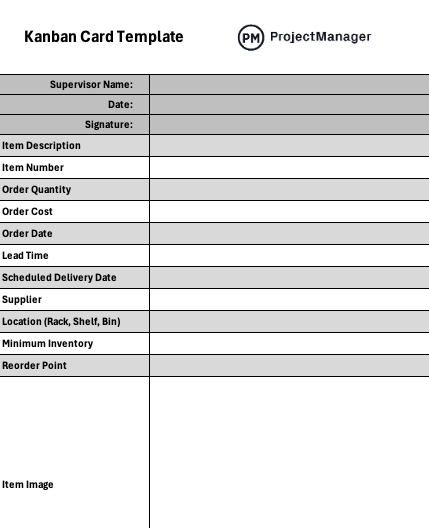
You can use this template to help your employees gather all the information they’ll need whenever they need to order items from suppliers such as order quantity, unit price, lead time and scheduled delivery date.
Benefits of Using Kanban in Manufacturing
By this point, the advantages of using kanban in manufacturing should be clear. However, it doesn’t hurt to reiterate those benefits, which we outline below.
Manage Work-In-Progress (WIP)
Kanban systems help limit work by setting a maximum limit for the number of items or tasks in progress at each stage of the manufacturing process. This is one of how kanban in manufacturing increases efficiency and keeps the team focused on specific tasks.
Plan, Track and Automate Workflows
Visualizing the project plan on kanban boards clarifies what’s being done when and by whom. It also provides transparency into that process for managers, who can then track progress and identify and resolve bottlenecks before they become an issue. Also, you can use kanban workflow automation features to streamline task management processes and keep teams working efficiently.
Faster Turnaround Time
Kanban in manufacturing improves efficiency by reducing waste, minimizing lead times and optimizing inventory. Products are produced faster and can get into the hands of customers faster. As noted, kanban systems can also identify and analyze bottlenecks in the workflow, which leads to improvements and faster turnaround times.
How ProjectManager Helps With Manufacturing
The kanban template is a fine tool to familiarize oneself with how a kanban system works, but it’s limited in terms of its use. Kanban software, on the other hand, is ideal for using kanban in manufacturing. But all kanban software tools are not the same. ProjectManager is award-winning project and portfolio management software with kanban boards that can streamline one or multiple projects. Use automated and custom workflows to reduce waste and task approval settings to ensure quality.
Create a Production Schedule With Gantt Charts
Kanban boards are only one of the multiple project views available with our tool. Kanban boards are great for managing workflow, but scheduling production requires a different approach. Use robust Gantt charts to schedule production, link all four types of task dependencies to avoid costly delays and filter for the critical path to identify essential tasks that must be completed to deliver quality products. Then set a baseline, which allows users to monitor planned progress and costs against actual progress and costs to keep on track.

Track Costs and Resource Utilization With Real-Time Dashboards
Once a baseline has been set for the production schedule, the project variance can be tracked across the software. Just toggle over to the real-time dashboards, which automatically collect live data and display it on easy-to-read graphs and charts showing time, cost, workload and more. For more detailed insights, use customizable reports such as status, portfolio, timesheets, workload, variance and more.
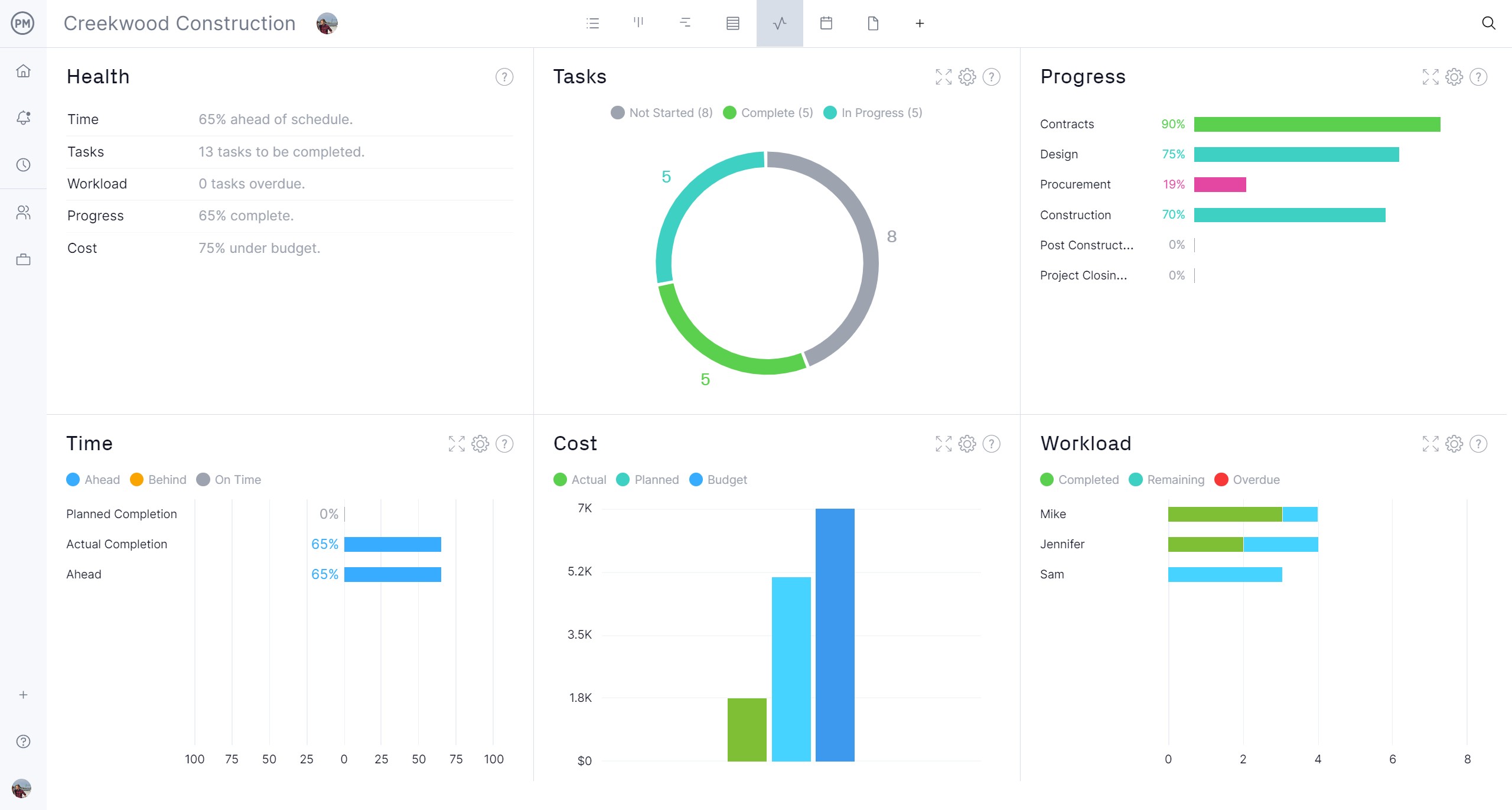
Related Kanban Content
Kanban in manufacturing is a small part of how kanban boards and cards are used for managing a project, its workflow and tasks. ProjectManager’s website publishes multiple weekly blogs, free guides, videos and templates that address every aspect of project management across industries. Here are a few kanban-related pieces.
- Best Kanban Software: Free & Paid Alternatives Ranked
- How to Make an Ideal Kanban Workflow for Your Team
- Gantt Chart vs. Kanban Board: Pros, Cons, Similarities & Differences
ProjectManager is online project and portfolio management software that connects teams whether they’re in the office, on the factory floor or anywhere in between. They can share files, comment at the task level and stay updated with email and in-app notifications. Join teams at Avis, Nestle and Siemens who use our software to deliver successful projects. Get started with ProjectManager today for free.

